Anyone For Tea?
In the early years of the Ruskin Pottery table wares were the mainstay of production along with tiles. An article written towards the end of the pottery’s life stated that ‘…at first the cups and saucers were made, followed by tiles of distinctive design and colours.’ and a number of very early cups and saucers are known. In a 1934 interview Howson Taylor told a reporter that his first creation, a tea set in the glaze known as Chrome No. 11, was sold to the Duchess of Sutherland.
In December 1901 Edward Taylor submitted a group of 47 pots and 12 tiles to the Victoria & Albert Museum for their approval. Included were table wares; a covered marmalade, five cups and saucers, an olive dish, a salad bowl, a cream jug, two other jugs, a tea pot, a bread and butter plate, a dish, a mustard and a cover. The museum purchased the salad bowl, two cups and saucers, one in brown glaze with a white interior, the other in apple green with rims decorated with foliage and a bread and butter plate in blue which are still in the collection. Marks are the WHT monogram, TAYLOR or the scissors mark. An article in the Artist for December 1901 mentions well-shaped claret jugs, salad bowls, tea sets, butter dishes and jugs as well as tiles. Some items had hand-painted decoration, ‘never heavy, generally some little floral motif is introduced.’
The early Forms In Pottery leaflet introduced by the Taylors illustrates four bowls, two small salt pots, a small jug, a cup and mentions saucers and plates. The table wares of the pre-1905 period exhibit the soufflé glazes developed by Howson Taylor; mainly a range of greens, blues, pink, oatmeal, pale yellow, celadon and lavender. The 1905 catalogue lists and illustrates the range of table wares which had by then been developed. Included were a variety of preserves and covered preserves, a biscuit jar, a butter dish, a cake stand, a dessert set comprising plates, a low comport, two cream jugs of different shapes, a tall comport, a range of five jugs, a water jug in plain or metal versions, three honey pots, a pickle jar, a mustard salt and pepper set, an egg cup set and a stand, a vegetable dish (tureen) and a stand, a covered muffin, a broth bowl and stand, a porringer, a cheese stand, a cress bowl and stand, along with several caddies. Some were for mounting in metal.
By the time the catalogue was issued, the Taylors had already considerably expanded the range of vases on offer and by the 1906/7 revised version of their catalogue, most of the table wares had been deleted. A few cups and saucers, plates and coffee cans continued to be made up until The First World War, along with the popular sets of egg cups on a stand and the tea bottle (shape 13). The 1909 catalogue still lists several preserves, the biscuit jar (shape 3) the butter dish (shape 4) and the cake stand (shape 69) but no examples from this period have turned up so presumably they were not made or they have been thrown away.
Table ware of the 1922-31 period
A small group of lustre tea wares was made in 1922 possibly for private use. From the mid-1920s a new range of finely potted lustre tea and coffee sets were introduced. Dated pieces are known for the years 1925-27, 1930 and 1931. The glazes used included the newly developed ochre-blue and delphinium, the new mottled colour effects as well as the apple green, pink and ice blue colours of the standard range. A very few kingfisher blue cups, saucers and plates, are also known. A few of the cups seem to have survived intact perhaps because of hairline cracking, for it is rather impractical table ware. Some harlequin sets are known, which were apparently sold that way being known as Gypsy sets though many will have been made up in later years. There are also lustre comports in both high and low pedestal versions from 1924 to go with the tea sets, dessert dishes, bon-bon dishes and stem cups.
The general production pattern for lustre wares is followed in that they appear to have been discontinued in 1931. The only table wares of the late period are teapots, coffee pots and jugs, sets of egg cups on a tray and pepper and salts usually in the late matte or crystalline glazes though a few high fired examples exist. Several designs by the Birmingham silversmith A.E. Jones incorporate Ruskin; small salt pots or egg cups as liners for condiment sets and in the early 1920s lids for jam pots were made. The late 1920s range of moulded wares comprise a biscuit box and a tall comport.
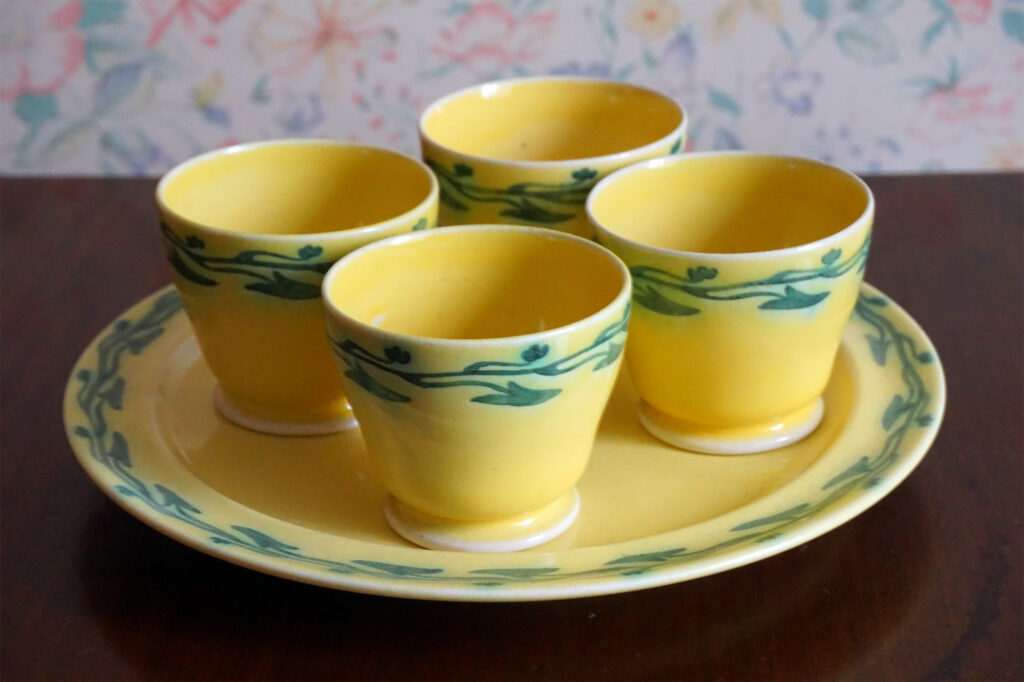
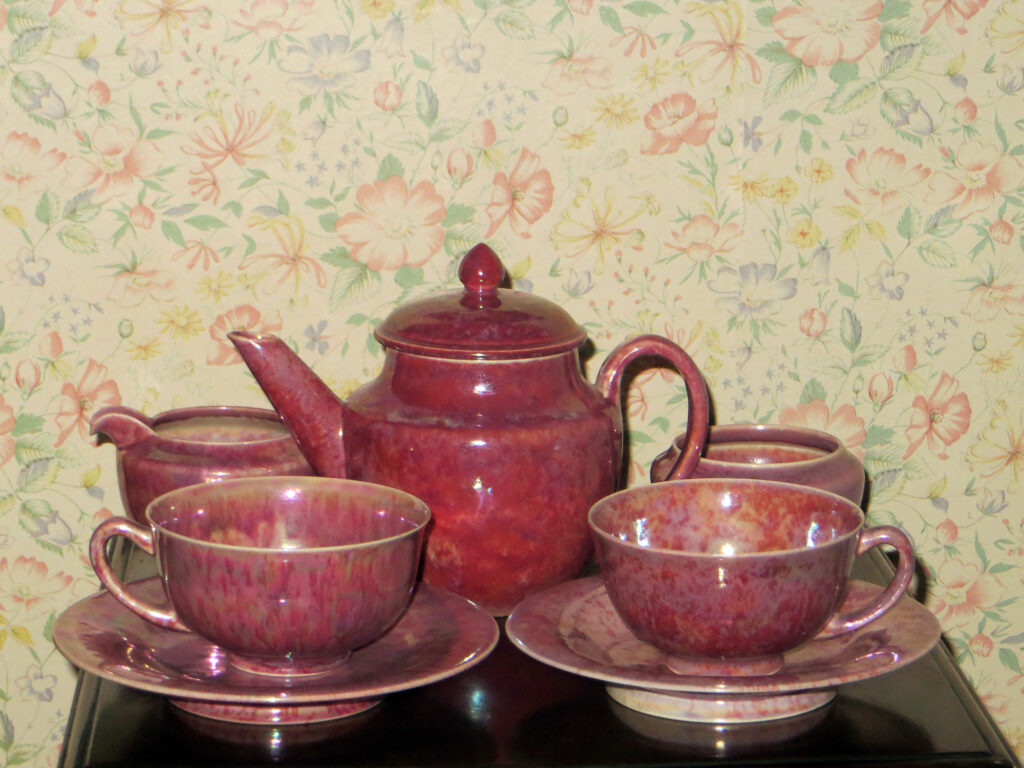
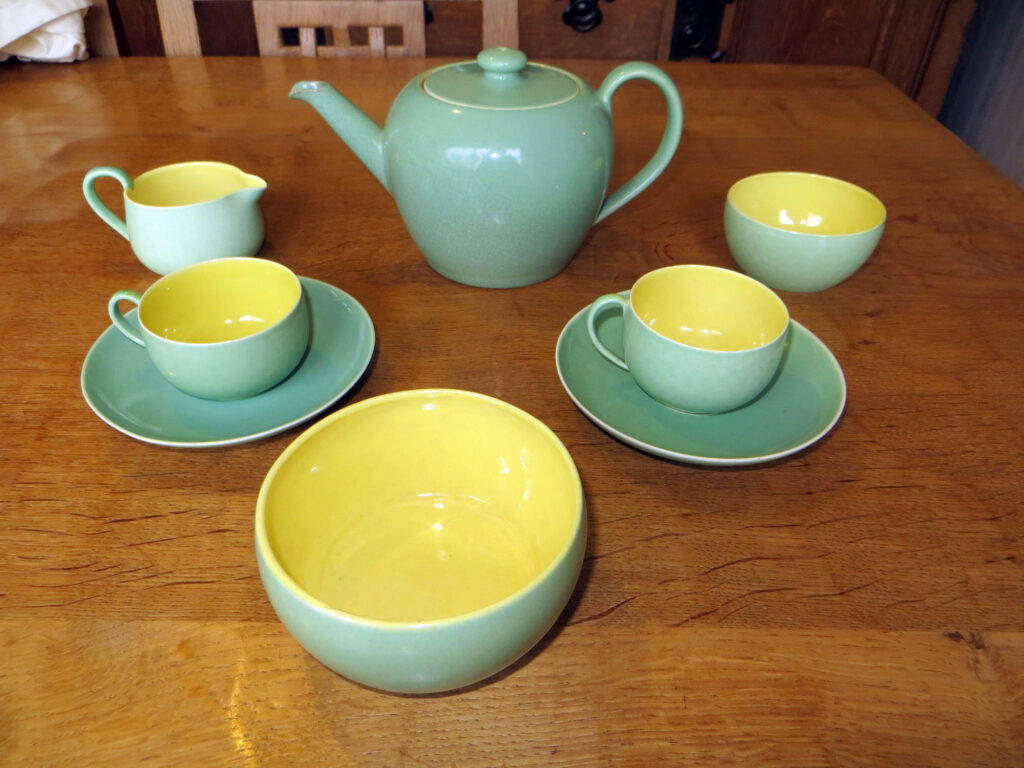
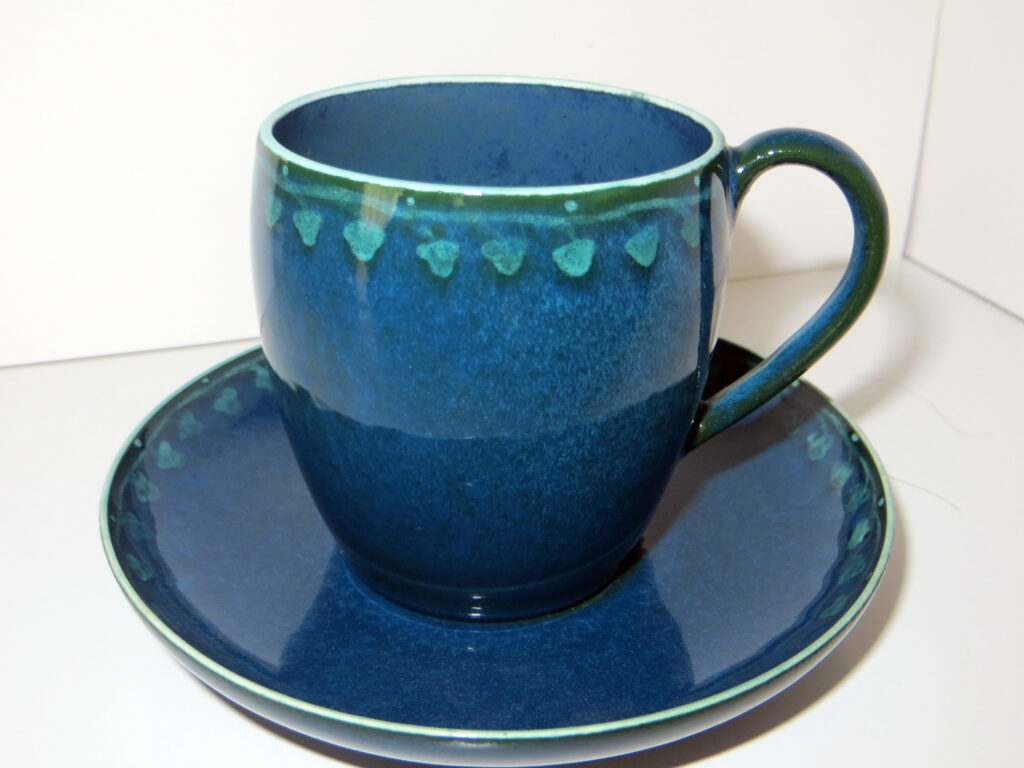
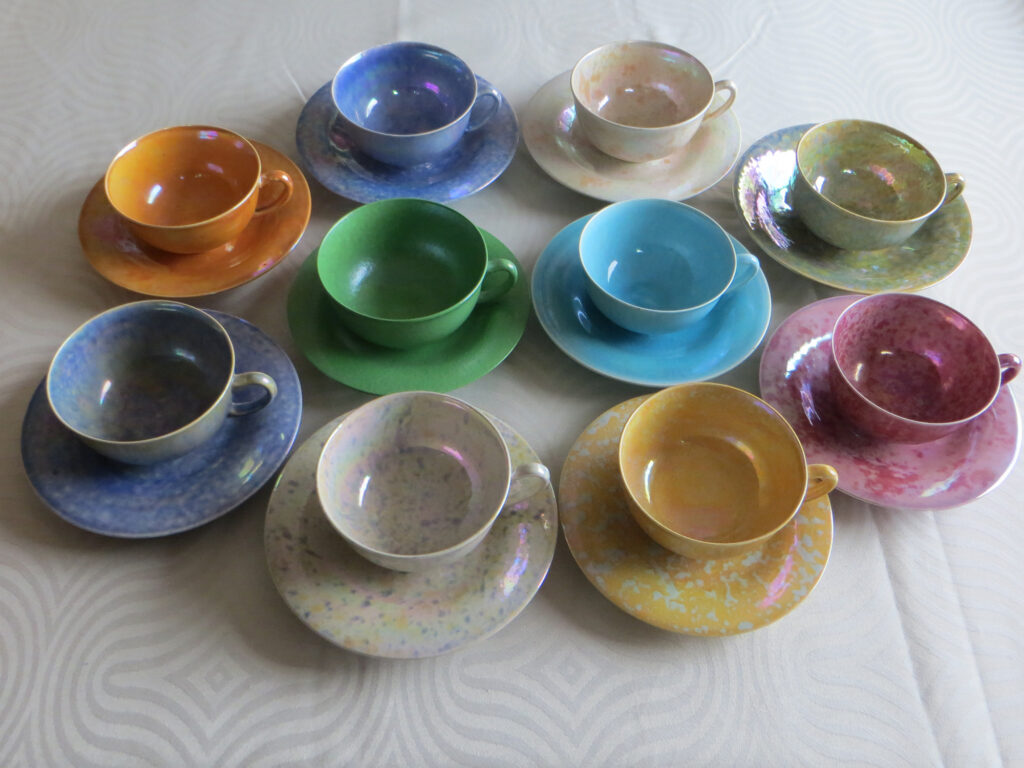


Hi, ive got a small green vase or cup with 3 handles and have always wondered what it was. It has the scissors mark, the date 1909 and “Ruskin Pottery” on the base. Could you help me to identify it, please. There is also some other writing which i can’t decipher. The green glaze has flowers stencilled on the side. Kind regards, Dinya Vogel
Hi Dinya,thanks for the image of the three handled love cup shape 127 from the factory catalogue, not many survive because of the delicate nature of the handles The glaze is in an apple green soufflé.